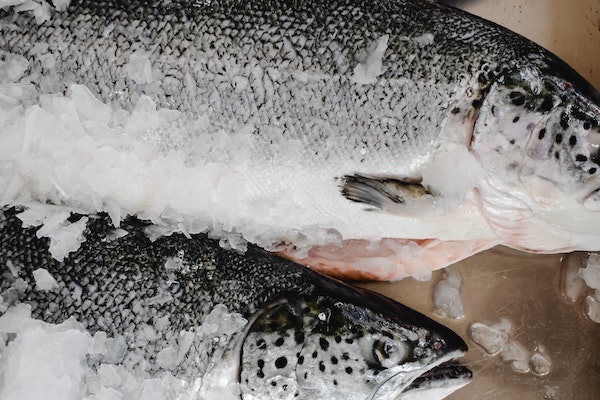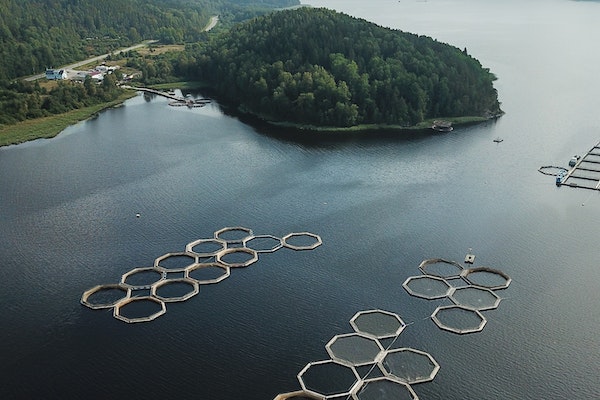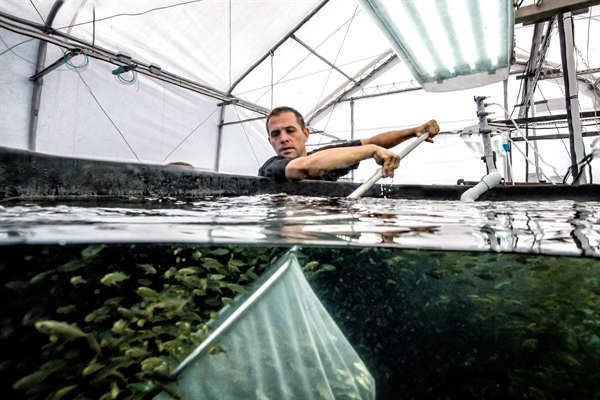Sustainable aquaculture identified as one of the four largest opportunities for ocean impact investment

Expanding aquaculture to meet the global food security demand presents “a major investment opportunity” according to a new report published by Morgan Stanley.
The global financial services firm argues that sustainable aquaculture represents one of the four largest opportunities for ocean impact investment. Today, approximately half of global seafood production originates from farmed sources, mostly in Asia, with the remainder from wild fish stocks, which are unlikely to increase significantly.
“Expanding aquaculture to meet this demand is a major investment opportunity, with an estimated $150 billion to $300 billion in capital expenditures needed to expand capacity in the next 10 years, which should be accompanied by efforts to mitigate the water pollution and labor risks inherent to the aquaculture industry,” wrote Morgan Stanley. “In some cases, sustainable aquaculture can also serve climate objectives as fish farms can also be co-located with new renewable energy sites and farmed seafood is a comparatively low-carbon source of protein.”
However, meeting the United Nations High Seas Treaty’s commitments and supporting a sustainable blue economy will require the continued participation of public and private funds, as well as philanthropic and non-governmental organizations. Morgan Stanley claims that tackling climate change, protecting biodiversity and fostering inclusive economic growth will require more than $3 trillion of investments in the world’s oceans in the coming decades. According to the report, the other three biggest areas for investment are:
- Decarbonizing the maritime industry: The International Maritime Organization, which regulates ship emissions, set a goal in 2018 to halve the emissions from the industry by 2050 through low-carbon fuel, ship modification and other solutions. Those efforts are expected to cost $50 billion to $70 billion annually from 2030 to 2050.
- Maritime solutions to protect ecosystems: As sea levels rise, coastal communities will need ways to protect critical infrastructure, such as roads and homes. Marine nature-based solutions, such as seagrass beds, mangroves and salt marshes, are proven to protect coastal communities from storms and flooding while also removing carbon from the atmosphere. Scaling these solutions will require approximately $1.1 trillion in investment between 2022 and 2050.
- Marine renewable energy: By 2040, global offshore wind sites could meet projected demand for almost all global electricity needs. To move toward a clean energy economy, wind farm construction will require $840 billion in capital expenditures.
The world’s oceans help mitigate some of the most severe effects of climate change. Not only do the oceans absorb almost 90 percent of global warming emissions and produce half of the oxygen that people breathe, but also drive economic progress and job creation. Ocean-related industries generate $2.5 trillion of economic value globally and support almost 3 billion people’s livelihoods in industries including seafood, port construction and coastal tourism.
However, the economic, social and environmental benefits of oceans are threatened. Heightened levels of carbon dioxide in the atmosphere make the seas more acidic, threatening species, entire ecosystems and the fishing economy – the ocean’s largest source of direct employment. Approximately 3 percent of global emissions can be attributed to the maritime shipping industry each year. Moreover, rising sea levels and record-setting hurricanes or cyclones could displace coastal communities from Mumbai to Miami – possibly as many as 400 million people this century.
Of the 17 United Nations Sustainable Development Goals, the “Life Below Water” goal has received the least amount of public money. But that could change with the recent UN agreement on the High Seas Treaty – a legal framework that creates protected maritime areas and sets 2030 targets to maintain the health and biodiversity of the oceans.
“With a framework for ocean conservation now in place, there is a strong case for investors to assess opportunities in the blue economy,” said Jessica Alsford, Morgan Stanley’s chief sustainability officer and CEO of the Institute for Sustainable Investing. “Over $3 trillion of funding is needed in the coming decades to protect our oceans so that they can continue to play a critical role in tackling climate change, curbing biodiversity loss and supporting inclusive economic growth.”
Follow the Advocate on Twitter @GSA_Advocate
Now that you've reached the end of the article ...
… please consider supporting GSA’s mission to advance responsible seafood practices through education, advocacy and third-party assurances. The Advocate aims to document the evolution of responsible seafood practices and share the expansive knowledge of our vast network of contributors.
By becoming a Global Seafood Alliance member, you’re ensuring that all of the pre-competitive work we do through member benefits, resources and events can continue. Individual membership costs just $50 a year.
Not a GSA member? Join us.
Author
-
Responsible Seafood Advocate
[103,114,111,46,100,111,111,102,97,101,115,108,97,98,111,108,103,64,114,111,116,105,100,101]
Tagged With
Related Posts

Fisheries
Study highlights a slowed global aquaculture growth rate and need to rebuild wild fish stocks
A UBC study says the world 'needs aquaculture' but rebuilding declining wild fish stocks is essential to achieving global food security.

Innovation & Investment
NOAA Sea Grant to invest $14 million to strengthen U.S. aquaculture
The federal funding will be spread across four strategic areas to improve U.S. aquaculture, informed by science and community needs.

Innovation & Investment
Irish government injects millions into aquaculture projects
The Irish government will devote €20 million in funding for capital investments to boost its aquaculture sector in Ireland.

Responsibility
The blue dimensions of aquaculture
Authors review global aquaculture production, including development, farming systems, environmental concerns and further growth potential.



